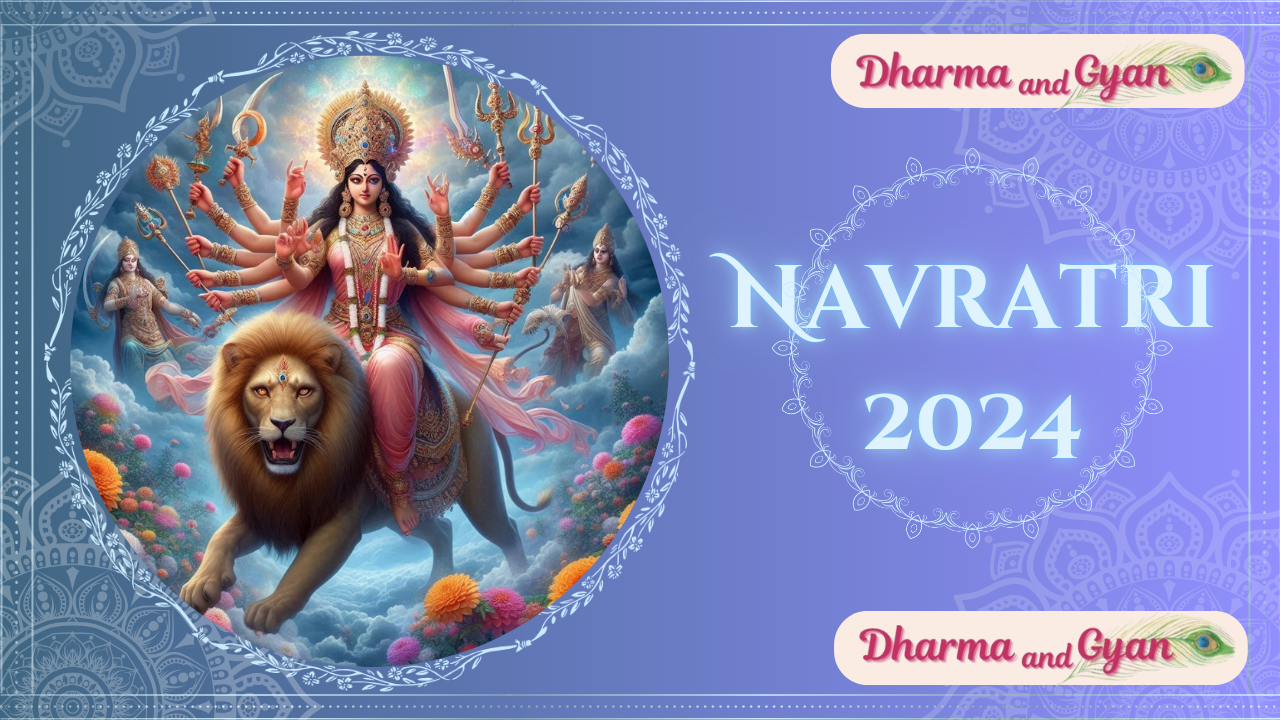What is Navratri?
Navratri is a very important festival of Hindu religion in which 9 forms of Goddess Durga are worshipped. Navratri means 9 nights. These times are so powerful to manifest anything and you can feel the blessing of Goddess Durga within your soul. Navratri is a major festival celebrated in India, which means “nine nights”.
The festival is celebrated for 9 days, each day is dedicated to the nine forms of the Goddess. What are those nine forms? We will see later but first when is Navratri starting in 2024? Here we go,

Table of Contents
Navratri 2024 Date
The holy festival of Navratri will begin from October 3, 2024 and will conclude with Vijayadashami on October 12, 2024
3 October 2024 (1st day): Dedicated to first form of Goddess Durga that is Shailputri
4 October 2024 (2nd day): Dedicated to second form of Goddess Durga that is Brahmacharini
5 October 2024 (3rd day): Third form of Goddess Durga- Chandraghanta
6 October 2024 (4th day): Fourth form- Kushmanda
7 October 2024 (5th day):Fifth form- Skandamata
8 October 2024 (6th day): Sixth form- Katyayani
9 October 2024 (7th day): Seventh form Kaalratri
10 October 2024 (8th day): Eight form Mahagaur
11 October 2024 (9th day ): Ninth form Siddhidatri
12 October 2024 (10th day): Dussehra , know more about Dussehra here.
Must be Wondering What are these forms and what they represents?
Each form of Goddess Durga represents some qualities, Lets see what are those qualities and what can we learn from it
| Form of Goddess Durga | Qualities |
| Shailputri – Daughter of the Mountain | Goddess Shailputri is the wife of Lord Shiva and the daughter of the mountain king Himalaya. She symbolizes Power and Determination. |
| Brahmacharini – The Ascetic Goddess | Goddess Brahmacharini is the goddess of penance and austerity. She symbolizes Meditation and Sacrifice. |
| Chandraghanta – One with a Crescent Moon on Her Forehead | Goddess Chandraghanta has a crescent moon shaped like a bell on her forehead. She symbolizes Courage and Valor. |
| Kushmanda – Creator of the Universe | Goddess Kushmanda created the universe with her gentle smile. She represents Creation and Energy. |
| Skandamata – Mother of Lord Skanda (Kartikeya) | Goddess Skandamata is the mother of Lord Kartikeya. She symbolizes Motherhood and Love. |
| Katyayani – Daughter of Sage Katyayan | Goddess Katyayani was born from the penance of Sage Katyayan. She is a symbol of Strength and Courage. |
| Kalaratri – The Dark Night of Destruction | Goddess Kalaratri has a fierce form, but she frees her devotees from fear. She destroys Darkness and Time (death). |
| Mahagauri – Extremely Fair in Complexion | Goddess Mahagauri is known for her fair complexion. She is the goddess of Compassion and Purity. Her form is peaceful and kind. |
| Siddhidatri – Bestower of Perfection | Goddess Siddhidatri grants all types of Perfections and Powers. She assists in the creation of the entire universe. |
Significance of Navratri
Navdurga (Nine forms of Goddess Durga) story holds immense importance from a spiritual, social and cultural point of view. This story depicts the worship of various forms of Goddess Durga, which inspires devotees to attain spiritual advancement and awakening of the soul. Through this, a symbol of strength, courage and fearlessness is presented. During Navratri, devotees attain spiritual purification and mental peace through fasting and meditation. This story promotes unity and brotherhood in the society, as people worship together.
Read about Navratri 2024 in Hindi- Here.
Worship of Goddess Durga brings freedom from troubles and positivity in life, giving courage to devotees to face difficulties.
Apart from this, it is an important part of Indian culture and tradition, which is transmitted from generation to generation and creates a deep emotional connection in devotees. For all these reasons, Navdurga story holds a unique religious and cultural significance. Read Navdurga Katha here.
This festival is celebrated to worship the nine forms of Goddess Durga also called Navdurga. After nine days of Navratri, the tenth day is called Vijayadashami, which symbolizes victory.


1 thought on “Navratri”